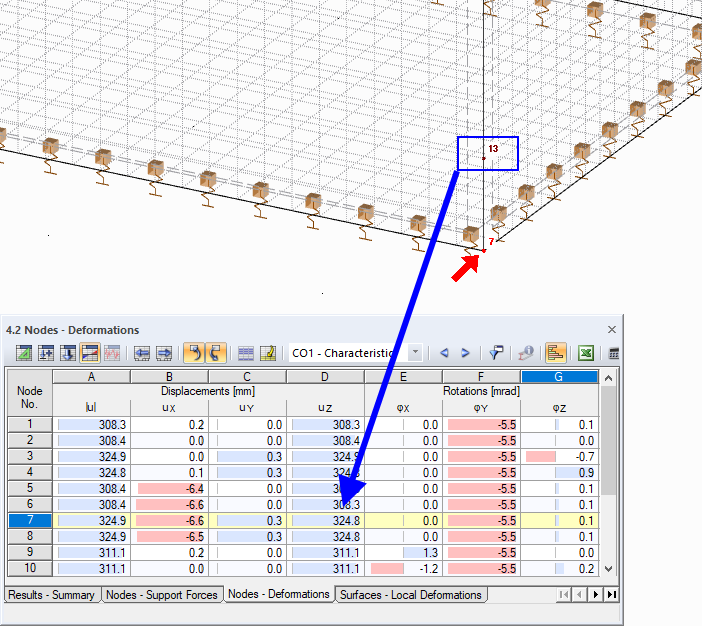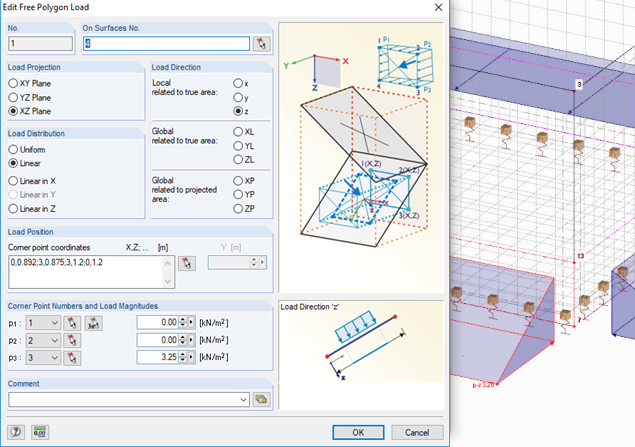In the first stage, the submersion depth of the floating body is determined. If the submersion depth is determined correctly, the lateral water pressure can be applied up to the waterline in the second stage. The buoyancy of the floating body can be considered via an elastic surface foundation. Submersion depth and buoyancy are linearly correlated. If a cube with an edge length of 1 m is completely submerged in water, it creates a buoyancy of 10 kN. This means that an elastic foundation coefficient of cz = 10 kN/m³ has to be applied for bottom surfaces.
This makes it possible to determine the correct submersion depth.
However, this requires that the floating body barely twists and that the side walls are perpendicular.
For each load combination, the submersion depth is determined first. An additional load case that contains the respective lateral loads is then added to each load combination. In the example, a load combination CO 1 with characteristic loads was created. A deformation uZ = 308 mm is obtained for Nodes 5 and 6, and uZ = 325 mm for Nodes 7 and 8. To make it easier to enter the loads, help nodes 11 to 14 were created at the respective locations.
The water loads have been applied via free polygon loads and for reasons of clarity, only one surface has been selected for each load. The load direction is local z. This means that the load is perpendicular to the surface. The load distribution is linear. Then, three load values have to be specified. Two points were always selected at the water surface where the load is zero, and a third point was selected at the deepest submerged point, which was subjected to 3.35 kN/m² and 3.08 kN/m², respectively.
Due to the fairly large deformations, a large deformation analysis has been set for the calculation of the load combination.




